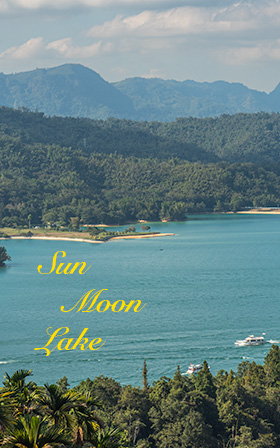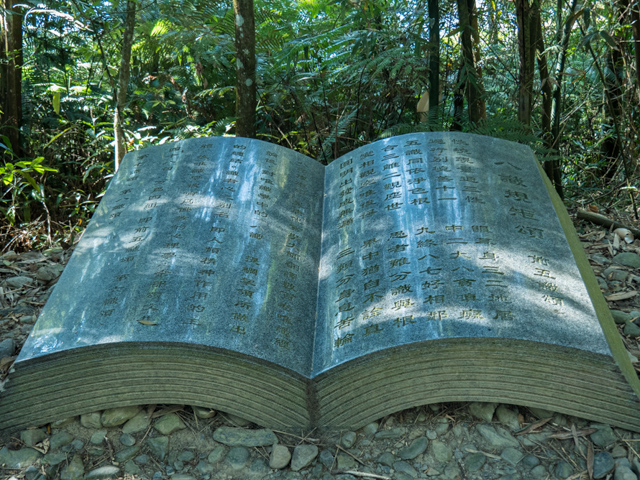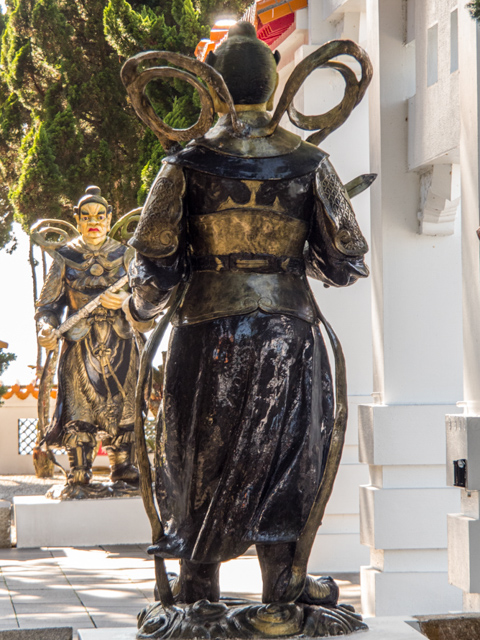


|
Located near the center of Taiwan, Sun Moon Lake is Taiwan's largest lake. I travelled there by taking the high speed train from Taipei to Taichung City and then a bus to Yuchi township. Arriving in Yuchi town at dusk I took up my accomodation located at the back of a cafe type resturant. Sun Moon lake derives its name from its shape. The east side is shaped like the Sun, the west, a crescent Moon. The lake is part natural and part artificial due to dams built by the Japanese in the colonial period (1895-1945). |



After Yuchi Town, Wenwu Temple was the first place I visited. Though my visit was an accident. I made my way down to the lake and followed the path along the lake. I came upon a set of steps which had a date of the year marked on each step. The steps start at the lake shore. They date back to a period when Wenwu could only be accessed by boat and climbing the steps. A mini-pligrimage. I think I intesected the path at about half-way. So I climbed the remaining steps, each one of them, until I came to the bus park at the top near the temple. Very spirtual!
When the Japanese built a hydro-dam in 1939, two temples along the lake shore, Longfend Temple and Yihua Hall had to be removed. When the temple managers received compensation from the electricity company they decided to pool their resources and build one temple, the Wenwu Temple.


Wenwu Temple is the only temple in Taiwan to have a seated Confucius.
Built on a hillside, the elevated section of the temple complex allows excellent views of Sun Moon Lake.

Taiwan has a number of aboriginal tribes. They were classified by the Japanese in the 1930-40s. Nine tribes are represented at the Formosa Aboriginal Cultural Village, Taiwan's largest open air museum.
To get there from Yuchi Town I took the bus to Itathao Pier and then the cable car to the village.

On display are the differing villages, totem polls, costumes and musical instruments. They are presented with a mixture of mannequins and living people.

Natives people are employed by the museum to showcase their skills and customs.



At different times of the day, in diiferent parts of the museum, live shows of dance and song are performed.
There are also water rides and a amusement park on the grounds. They were of no interest to me.
Xuanzang Temple is named after a famous Tang Dynasty Buddhist monk who was sent, from China to India to find Buddhist scriptures. After 10 years he returned, with 650 sutras, 75 which he translated, and 1335 scrolls. This knowledge contributed to the spread of Buddhism in China.
The Xuanguang Temple is a small temple on the shore of Sun Moon Lake which can be reached by boat and climbing stairs. It was built in 1958 to house a piece of bone from the monk, Xuangzang.
The hiking trail is about 850 meters long and connects the Xuanguang and Xuanzang temples. Along the route are references to the Buddhist religion and many flowering plants such as jasmine, magnoliaand orchid which flower at different times of the year emersing the locale with their distinct aromas.




Another reward for visiting Xuangzang Temple is the wonderful view over Sun Moon Lake.